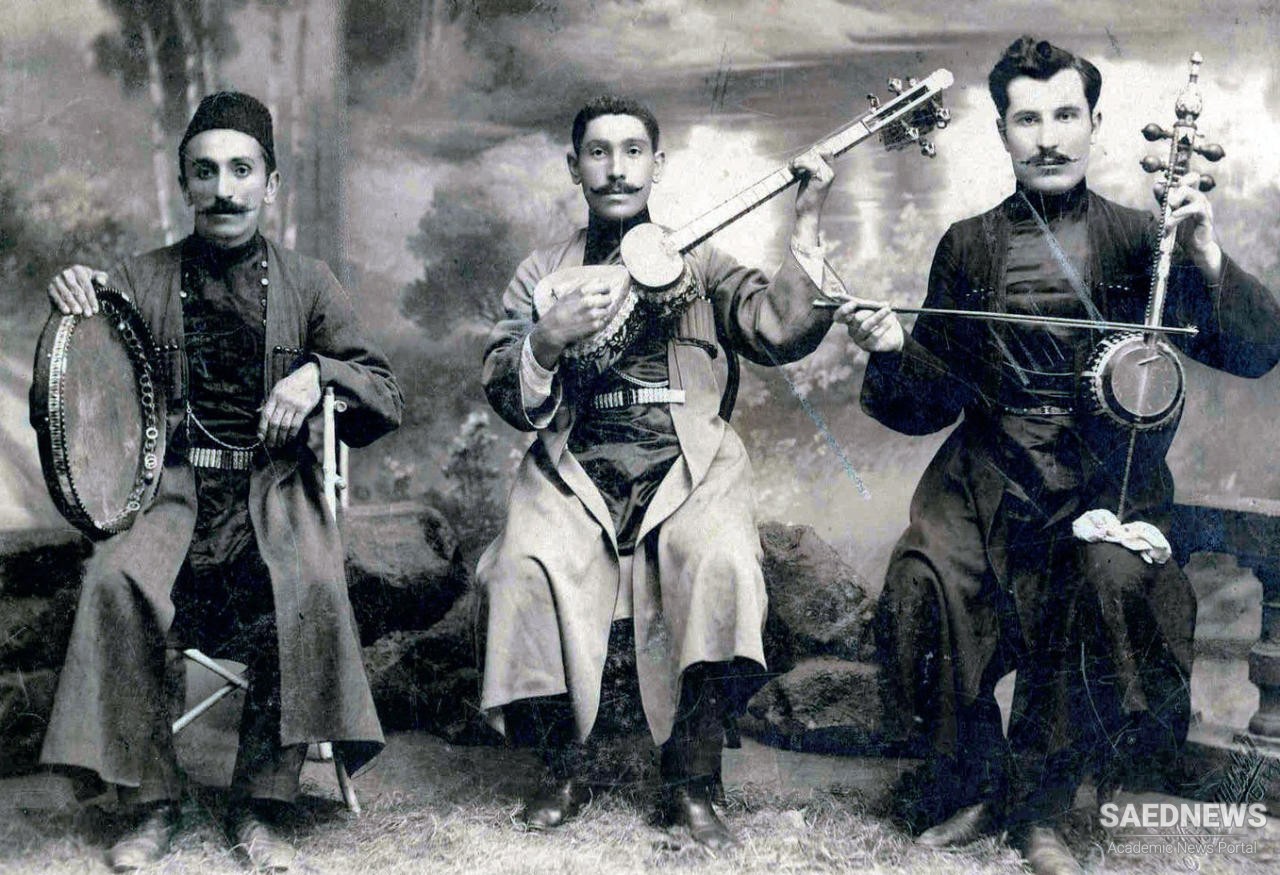The first information about the music of Azerbaijan was obtained in a number of monuments at the rock carvings during the archaeological excavations in Gobustan (XVIII-III millennium of BC) and Gamigaya (III - I BC). Rich information was given about medieval music, music genres, musical instruments in “Kitabi-Dede Gorgut epos (VII century), works of Nizami, Fuzuli. In the risalas (journal) of such famous scholars like Safiaddin Urmavi (XIII century), Abdulqadir Maragahi (XIV century), Mirzabey (XVII century), Mir Mohsen Navvab (XIX century) the high level of development of medieval musical culture, performance, and the theoretical issues of Azerbaijani music.
The first stage of the history of Azerbaijani music consists of minstrel music art. In own creative work of art the minstrel genre of art combining the creation of poet, singer, and composer comprises the base of music genre with its genre and richness of form.
The next stage is the classical music-mughams. The creators and protectors of wealth of classical music of the past – mughams, sazandas differ with high artistic skills. The creators of the mugam, music having classic heritage with ancient roots, singers and sazandas’ art lives today and develops.
Like all song creativity of the people, mugham is being one of important forms of Oriental art determines many things in the modern composer creation, and feeds different areas of modern music of Azerbaijan.
The history of Azerbaijani music art is known with the names of many well-known mugham masters. They are masters of the nineteenth century, the well-known Sattarkhan, Haji Husi had created the famous music school of singing. Names of well-known masters of the art of the XIX century like Haji Husu, Mashadi Ishi, Alesker Shirin, tar player Sadıqjan and others, and in the early of our century Jabbar Garyaghdi, Mashadi Jamil Amirov, Seid Shushinski are known to us. From instrumental performers of mugham Gurban Pirimov, Mansur Mansurov, Ahmed Bakikhanov, Bahram Mansurov, and others gained the fame, too. Mugam ‘s regularities, its traditions were taught and spread since ancient times in special schools - meetings, circles under guidance of well known mugham masters Kharrat Gulu (Shusha), Mahmud aga (Shamakhy), Mashadi Malik Mansurov (Azerbaijan), and others. They have played an important role in the formation of school performance of Azerbaijan.
As early as the beginning of century so many thought that as because of absence of temper in the folk musical instruments, it was not possible to write Azerbaijani music in notes. This problem in the development of musical art of Azerbaijan was solved only at the beginning of the twentieth century. Its solution shows that Azerbaijani music was included in to the overall system of professional musical culture of the world. In January 12 (25), 1908 the premiere of the opera of U. Hajibeyov Leyli and Majnun was held. The performance laid the foundation of the national opera and all professional composer creative development of Azerbaijan. This opera, as well as so called mugham operas written by U.Hajibeyov before revolution and his subsequent operas - Sheikh Sanan, Asli and Kerem, Rustam and Sohrab, Shah Abbas and Khurshud Banu, as well as opera of Zulfugar Hajibeyov Ashiq Garib» , Muslum Magomayev’s Shah Ismail are deep specific examples of creativity included in the national history of music. Most valuable aspects of operas written in the following years were developed in the works.


 Handel's Musical Heritage
Handel's Musical Heritage














































